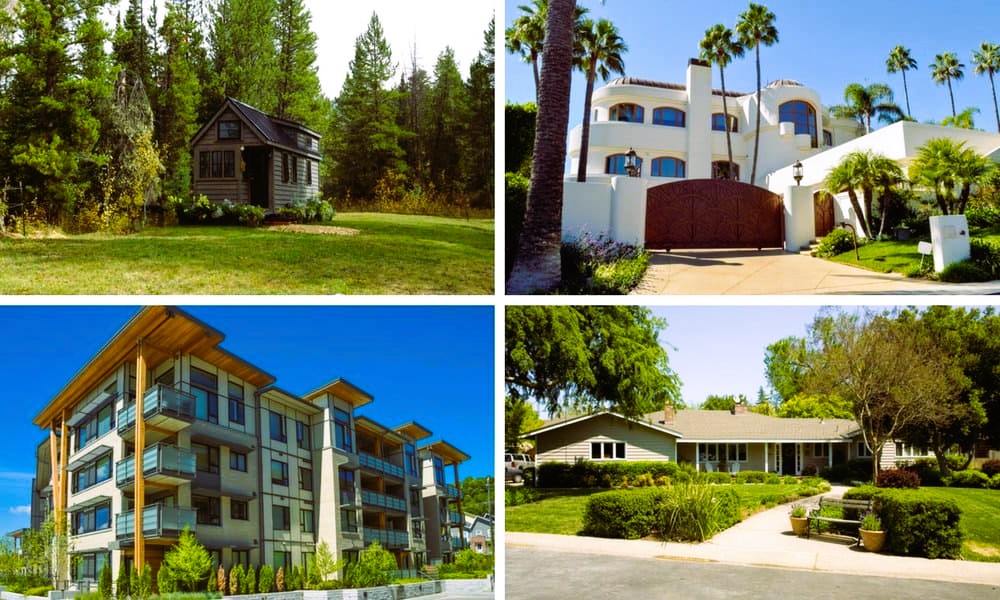Real estate is a cornerstone of economic activity and community development in Canada. Whether you’re a homebuyer, investor, or simply curious about the Canadian real estate landscape, understanding the classification and types of real estate is essential. In this comprehensive guide, we will explore the various categories and types of real estate in Canada, shedding light on the diverse opportunities and challenges that exist in this dynamic sector.
Classification of Real Estate in Canada
Real estate in Canada can be classified into several broad categories, each serving different purposes and attracting distinct types of investors. The primary classifications include:
- Residential Real Estate: This category comprises properties primarily used for residential purposes. It includes single-family homes, condominiums, townhouses, duplexes, and apartment buildings. Residential real estate is the most common type and is often the focus of individual homebuyers.
- Commercial Real Estate: Commercial real estate encompasses properties used for business and income-generating purposes. This category includes office buildings, retail spaces, industrial facilities, hotels, and warehouses. Investors in commercial real estate aim to generate rental income and capital appreciation.
- Industrial Real Estate: Industrial real estate refers to properties designed for manufacturing, warehousing, and distribution activities. This category includes factories, industrial parks, distribution centers, and manufacturing facilities. Industrial real estate can be a lucrative investment due to its income potential from leasing to industrial tenants.
- Retail Real Estate: Retail real estate consists of properties used for retail businesses, such as shopping centers, malls, strip malls, and standalone retail stores. Retail properties are often leased by retailers, and investors seek rental income and the potential for increased foot traffic.
- Office Real Estate: Office real estate includes office buildings and office spaces leased to businesses and professionals. It can range from small office spaces in mixed-use buildings to large, high-rise office towers in downtown areas. Office real estate investors aim for stable rental income and the potential for long-term leases.
- Hospitality Real Estate: This category covers properties in the hospitality industry, such as hotels, resorts, motels, and vacation rentals. Investors in hospitality real estate seek income from guest bookings and tourism, making this sector susceptible to economic fluctuations.
- Agricultural Real Estate: Agricultural real estate comprises farmland and properties used for farming and agriculture. Canada has vast agricultural land, and investors may purchase agricultural real estate for farming operations or as a long-term investment.
- Special Purpose Real Estate: Special purpose real estate includes properties designed for specific uses, such as healthcare facilities, educational institutions, religious buildings, and government-owned properties. These properties serve specialized functions and often have unique ownership structures.

Types of Real Estate Ownership
In Canada, real estate ownership can take various forms, each with its rights, responsibilities, and implications:
- Freehold Ownership: Freehold ownership, also known as fee simple ownership, grants the owner full rights and control over the property. They have the freedom to use, modify, and transfer the property as they see fit, subject to local zoning regulations and legal restrictions.
- Condominium Ownership: In a condominium ownership structure, individuals own their individual units within a larger building or complex. They also share ownership of common areas and amenities with other unit owners. Condominiums are governed by condominium associations, which set rules and collect fees for maintenance and shared expenses.
- Leasehold Ownership: Leasehold ownership involves leasing a property from the landowner for a specified period, often long-term. While leasehold owners have certain rights, such as using and potentially improving the property, they do not own the land itself. Leasehold ownership is common in some indigenous communities and on leased land.
Real Estate Market Dynamics
The Canadian real estate market is known for its regional variations, with different cities and provinces experiencing distinct trends and conditions. Several factors influence the dynamics of the Canadian real estate market:
- Economic Factors: Economic conditions, such as employment rates, income levels, and economic growth, play a significant role in the demand for real estate.
- Interest Rates: Changes in interest rates can affect mortgage affordability and, consequently, homebuying activity. Low interest rates often lead to increased demand for properties.
- Demographics: Population growth, migration patterns, and generational shifts impact housing demand. Urbanization and immigration also influence the demand for various types of real estate.
- Government Policies: Government policies, including taxation, housing regulations, and lending policies, can shape the real estate market. In recent years, policy changes have aimed at cooling down overheated markets and improving housing affordability.
- Supply and Demand: The balance between housing supply and demand is a critical determinant of price trends in the real estate market. A shortage of housing can lead to price increases, while oversupply can lead to price corrections.
- Market Sentiment: Consumer and investor sentiment can drive real estate market dynamics. Perception of future price growth or stability can influence buying and selling decisions.
Challenges and Considerations

While real estate investment can offer significant opportunities for growth and income, it also comes with challenges and considerations. These include:
- Market Risk: Real estate markets can be cyclical, and property values can fluctuate. Investors should be prepared for potential market downturns.
- Property Management: Owning and managing real estate requires time and effort, especially when dealing with rental properties. Property maintenance, tenant management, and compliance with regulations are ongoing responsibilities.
- Financing: Financing real estate purchases often involves obtaining mortgages or loans. Understanding interest rates, borrowing costs, and financing options is essential for investors.
- Legal and Regulatory Considerations: Real estate transactions involve legal contracts and regulations that vary by jurisdiction. It’s crucial to be aware of local laws, zoning regulations, and tax implications.
Conclusion: A Dynamic and Diverse Real Estate Landscape
The world of real estate in Canada is multifaceted, with a wide range of property types, ownership structures, and market conditions. Whether you’re a prospective homebuyer, investor, or simply interested in real estate, understanding the classification and types of real estate in Canada is a valuable step toward navigating this dynamic and ever-evolving sector. Each category of real estate offers unique opportunities and considerations, making it essential to tailor your real estate decisions to your goals and circumstances. By staying informed and seeking professional guidance when needed, you can make informed choices in the Canadian real estate market and achieve your real estate objectives.
